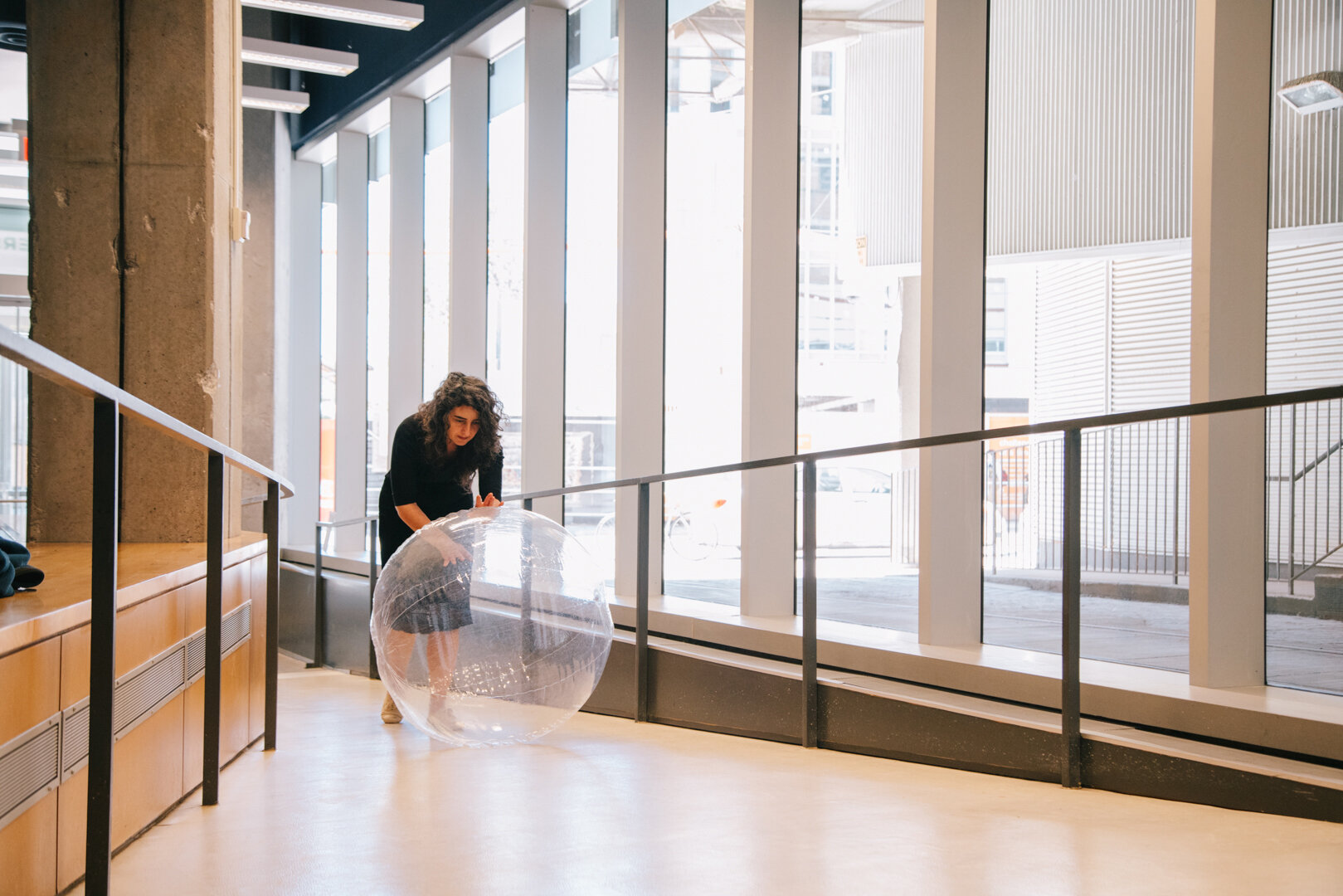
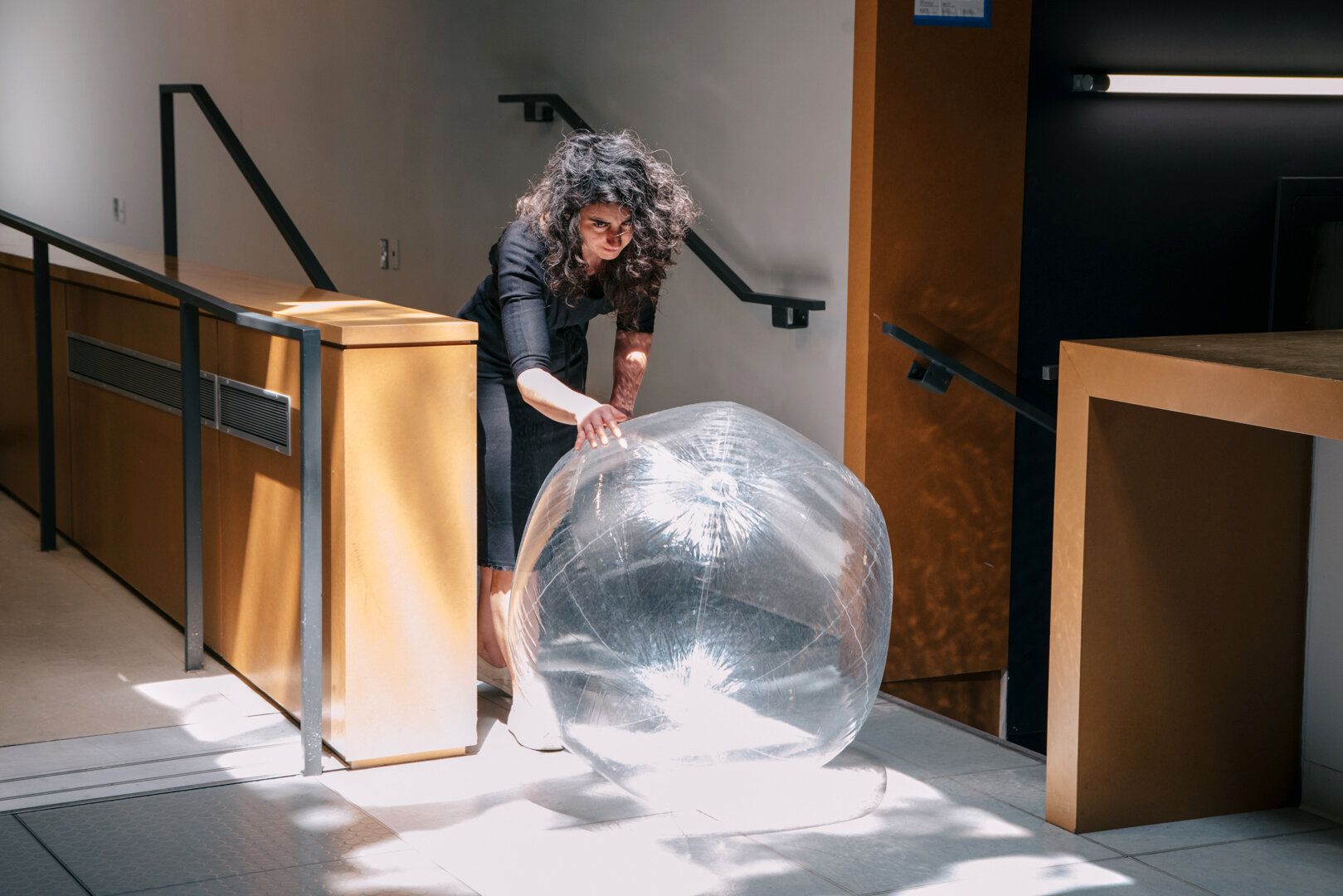
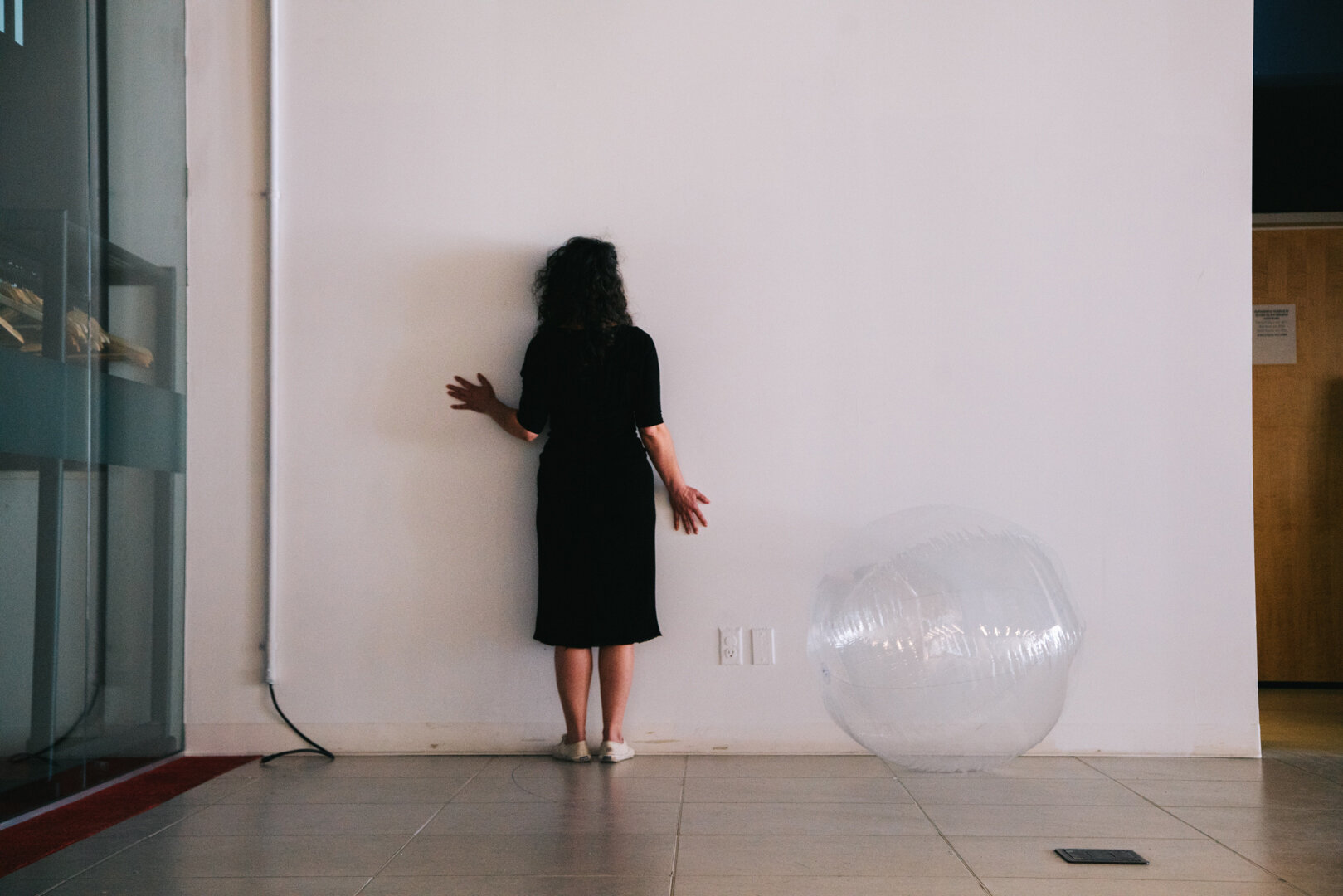
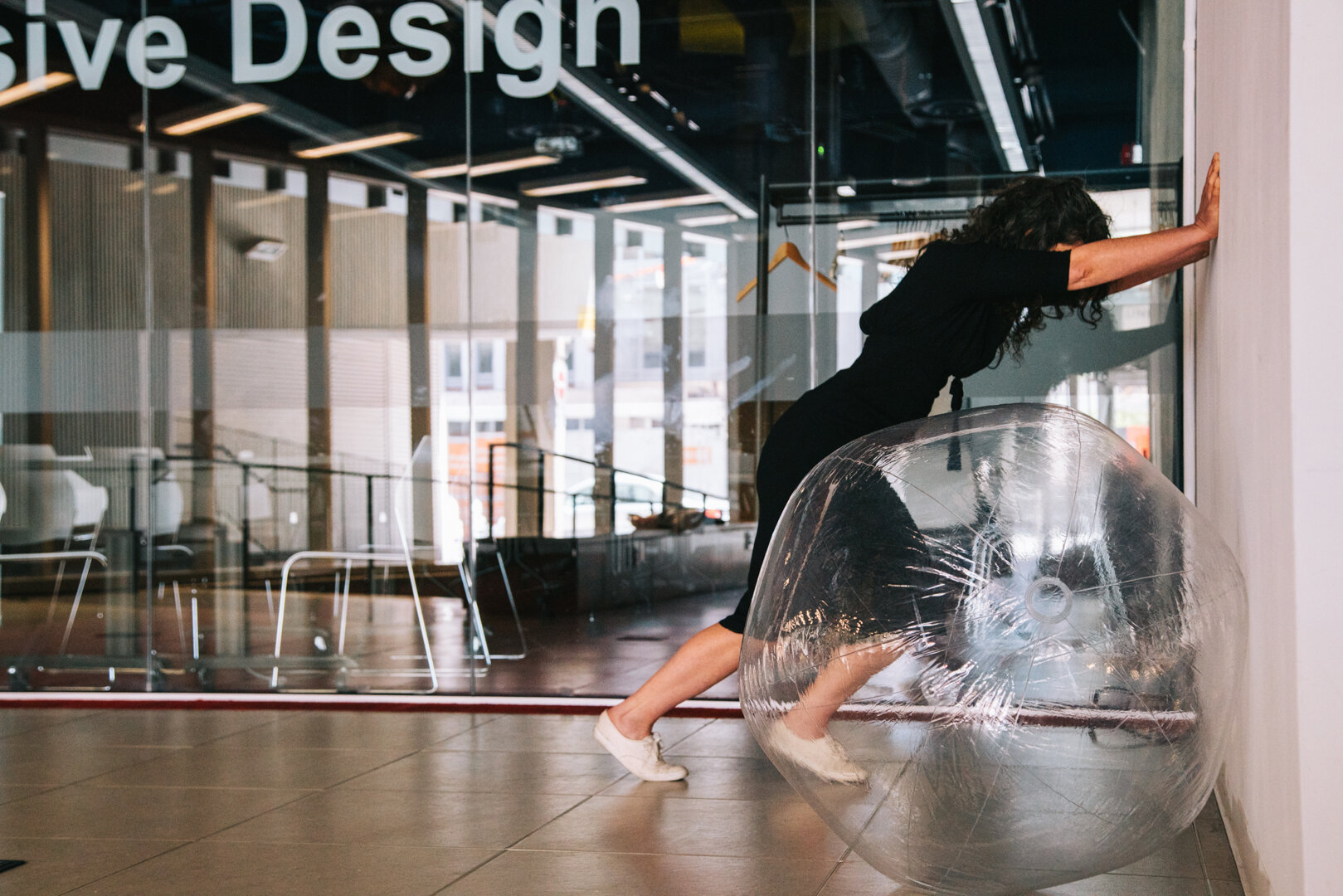
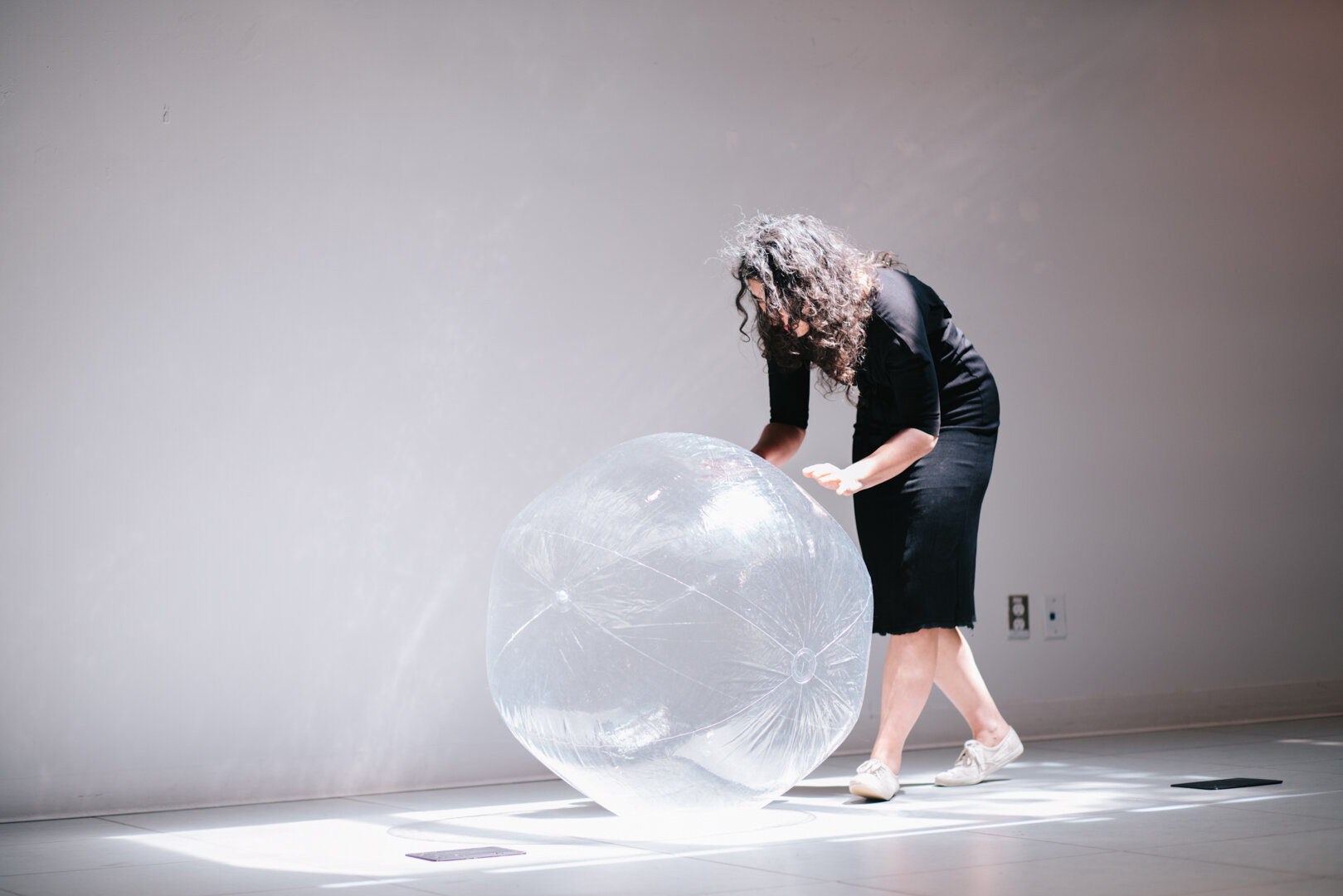
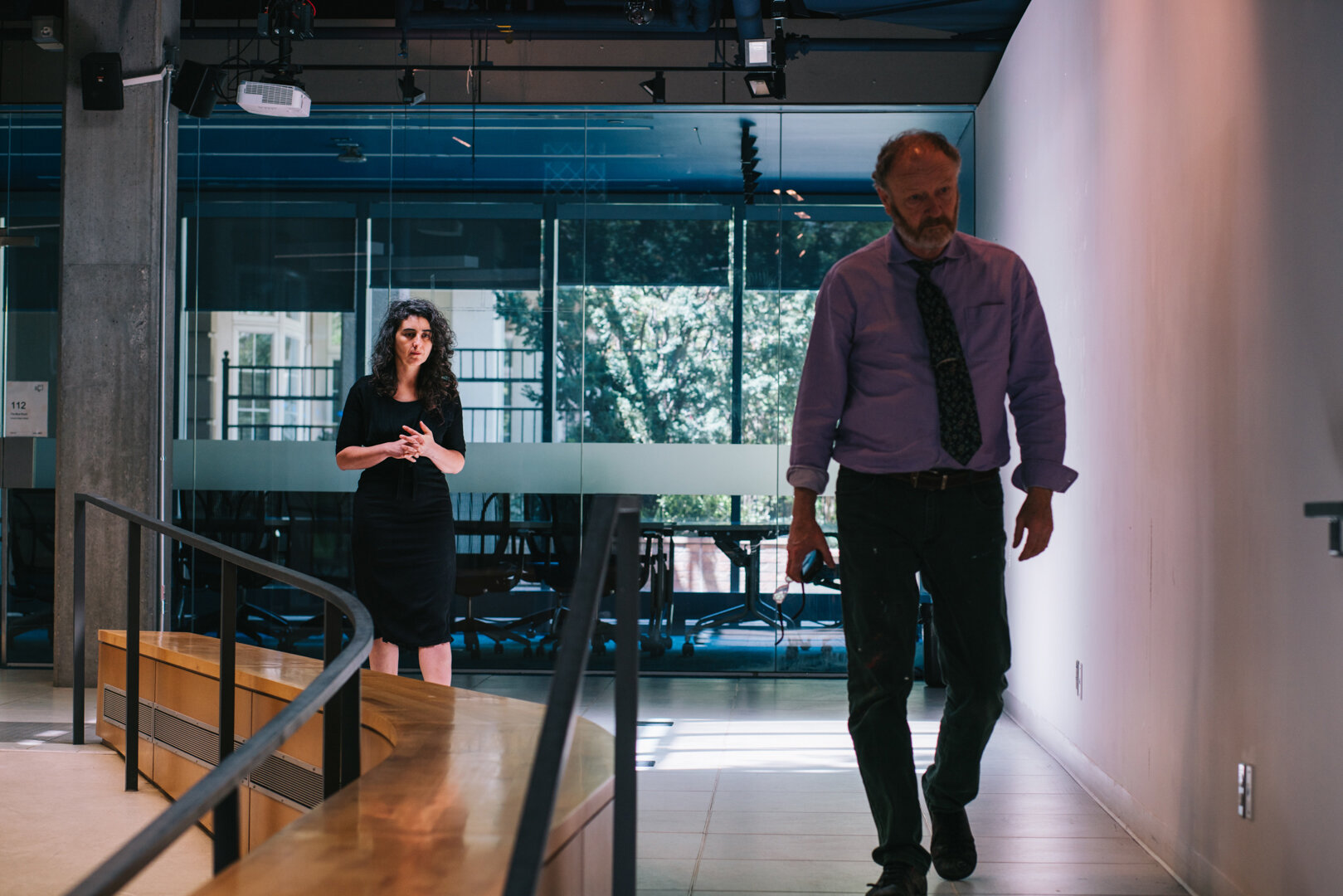
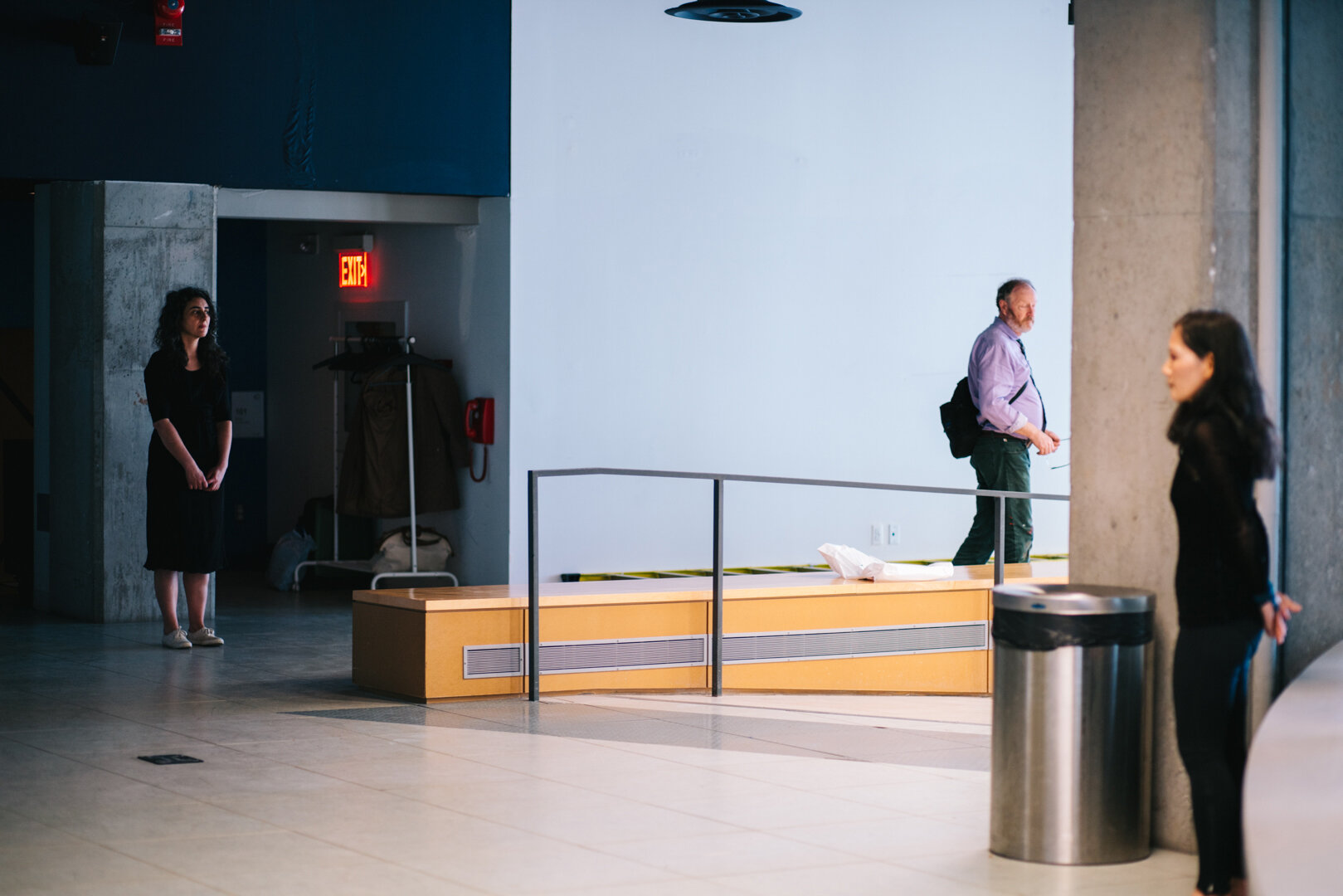
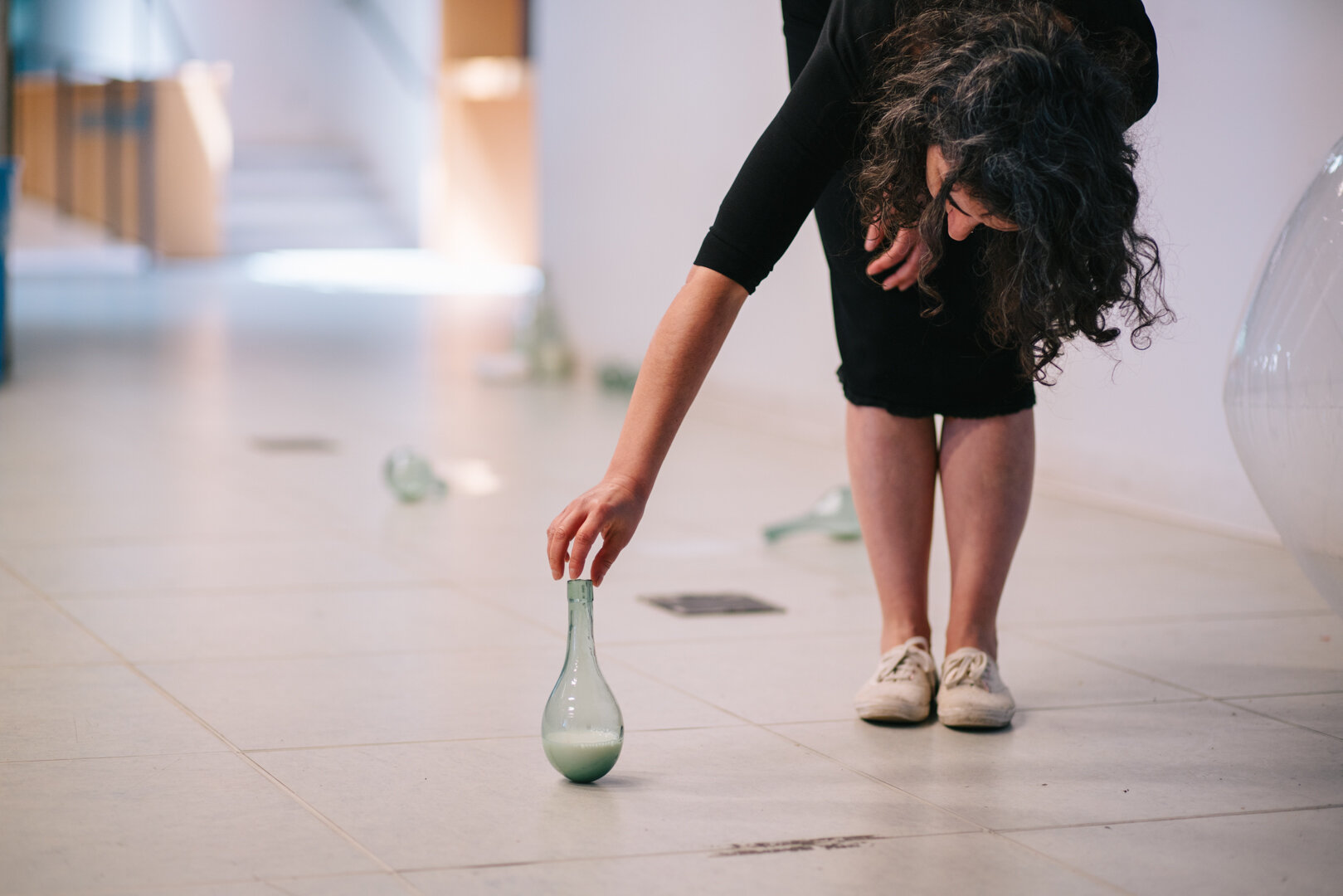
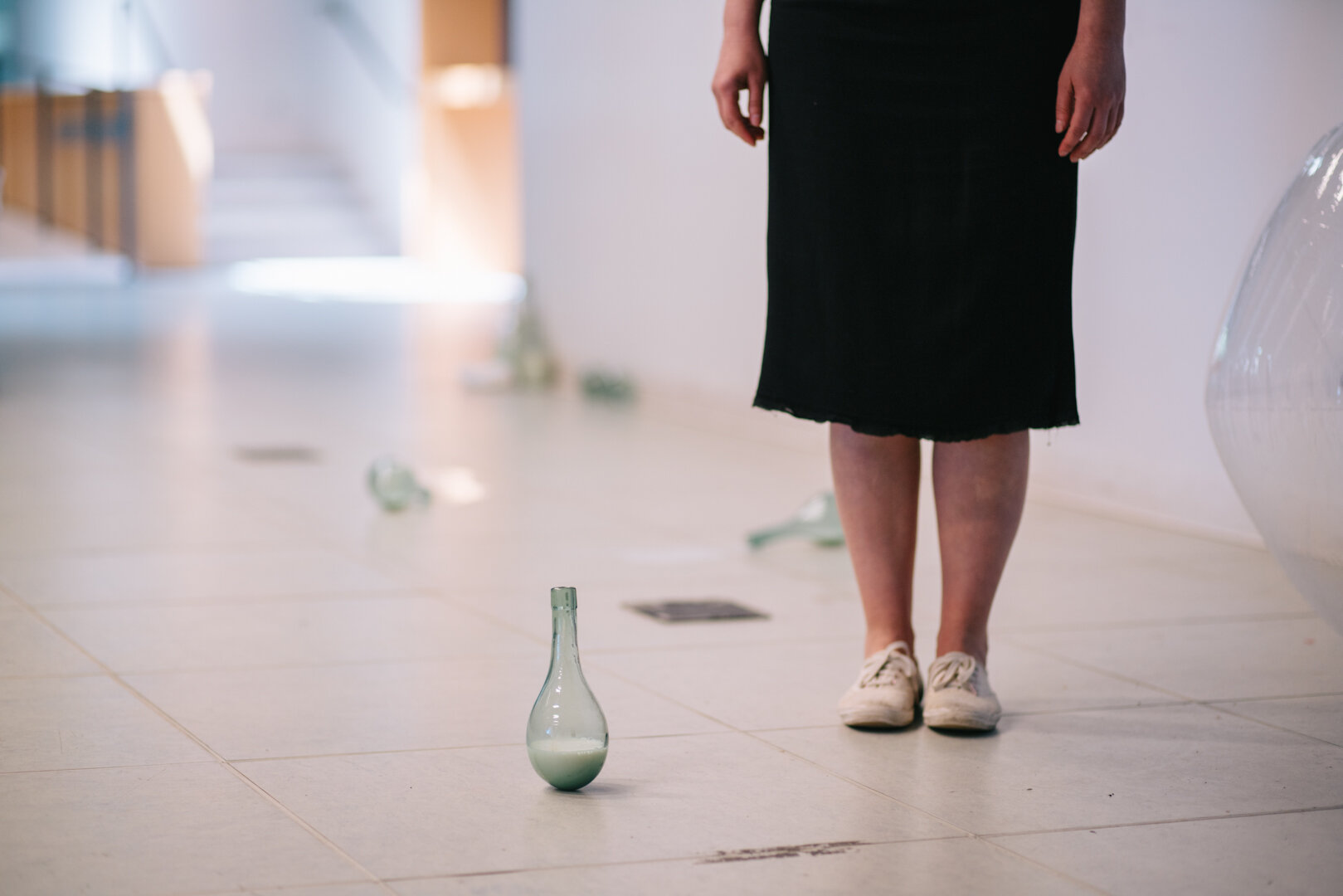
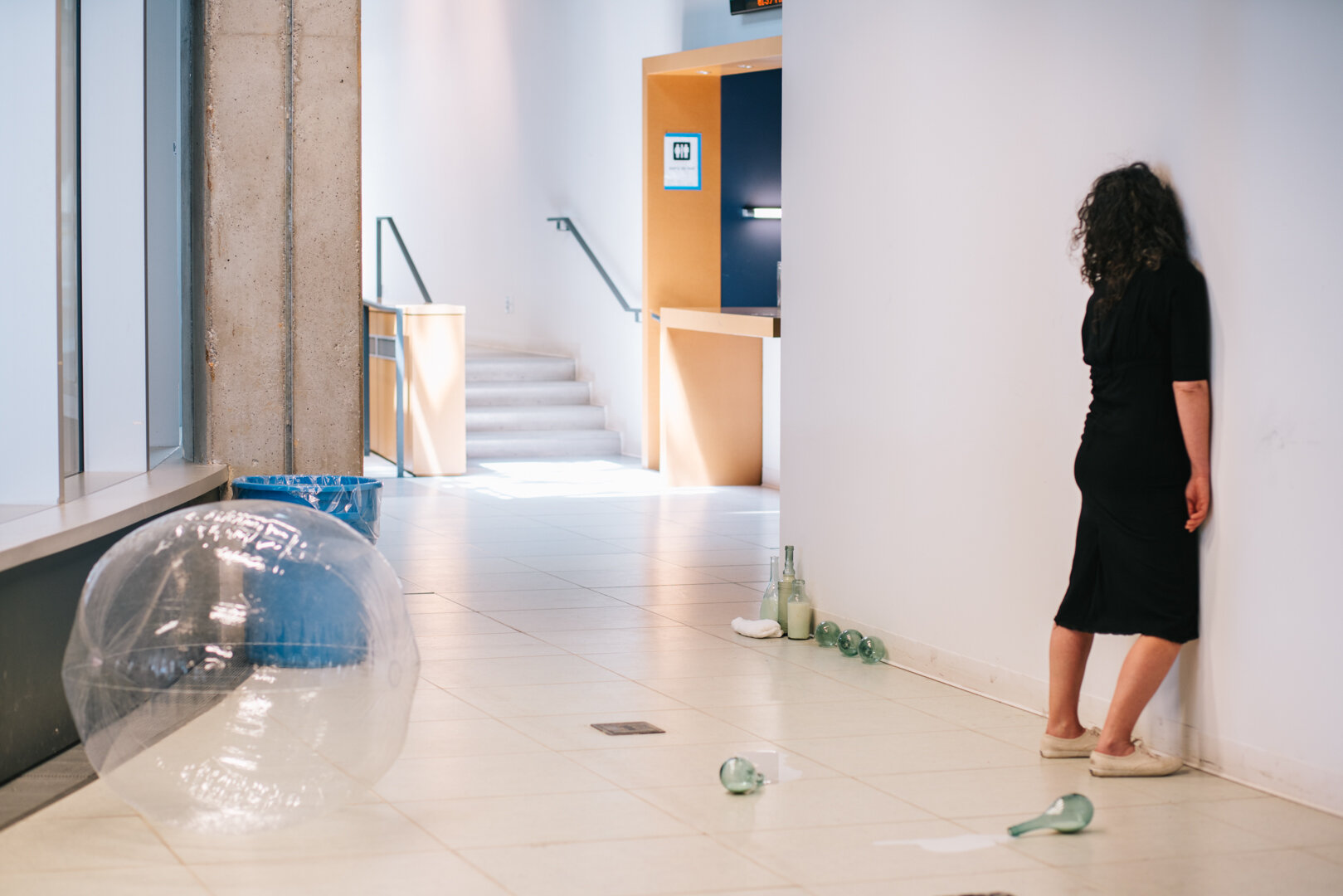
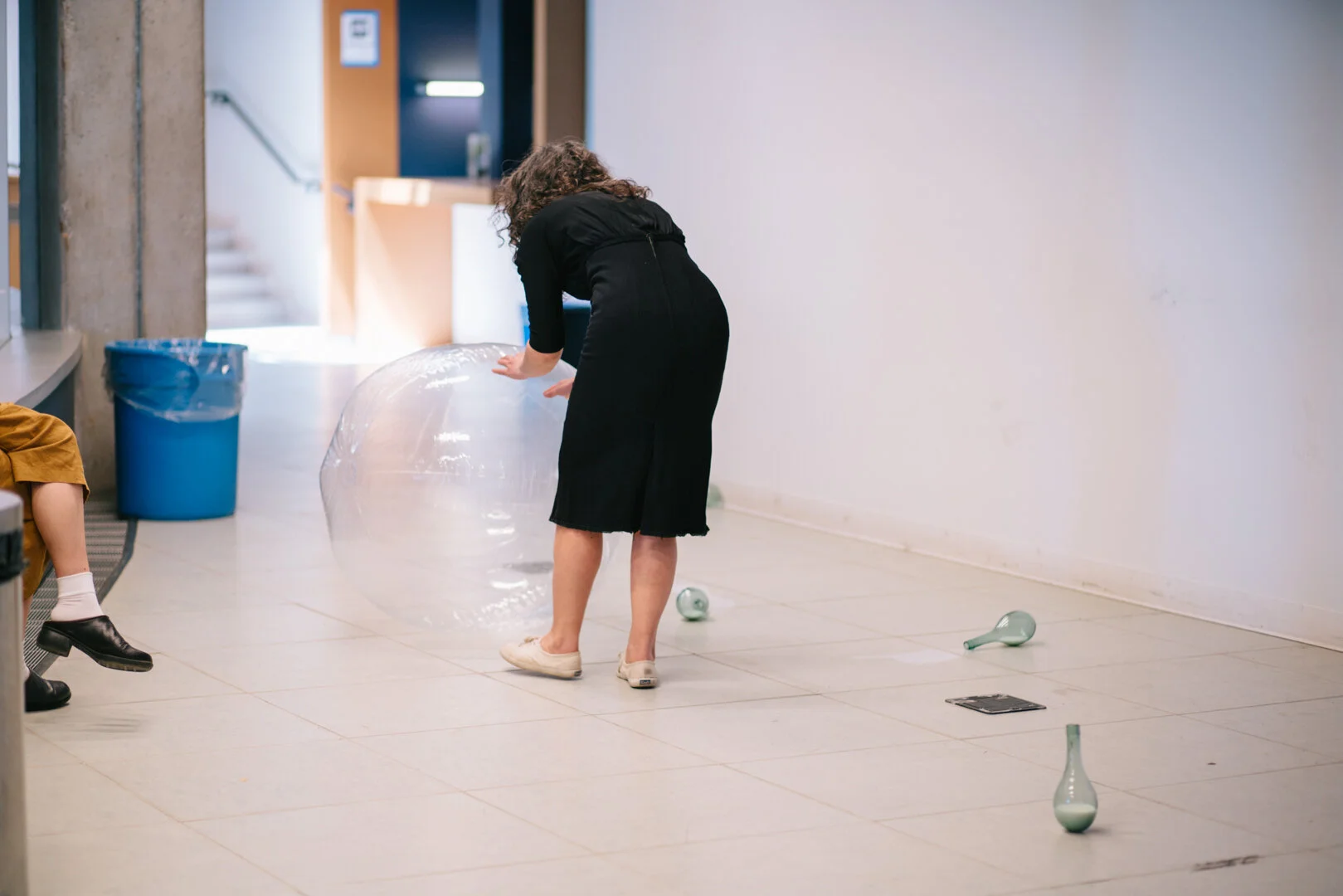
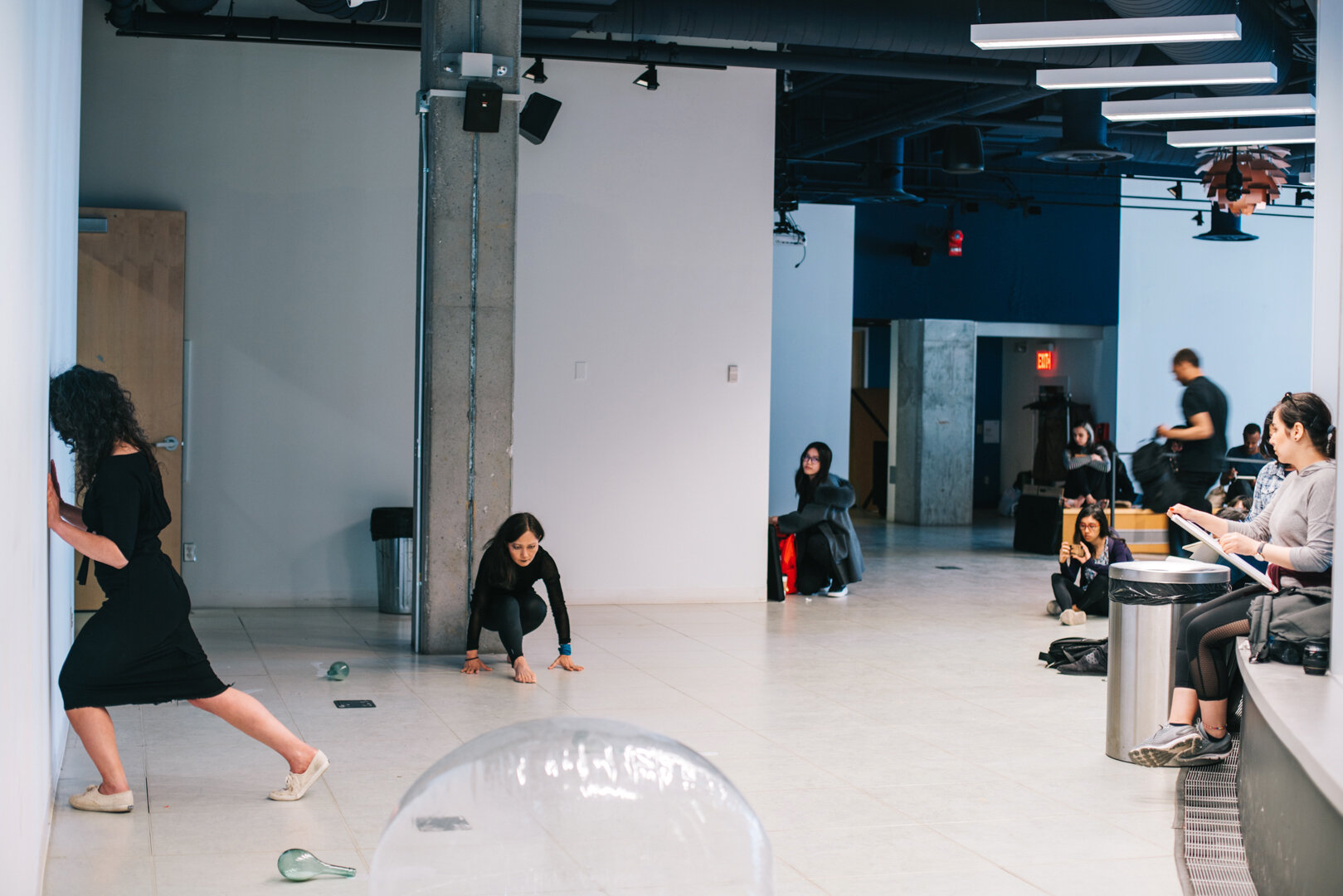
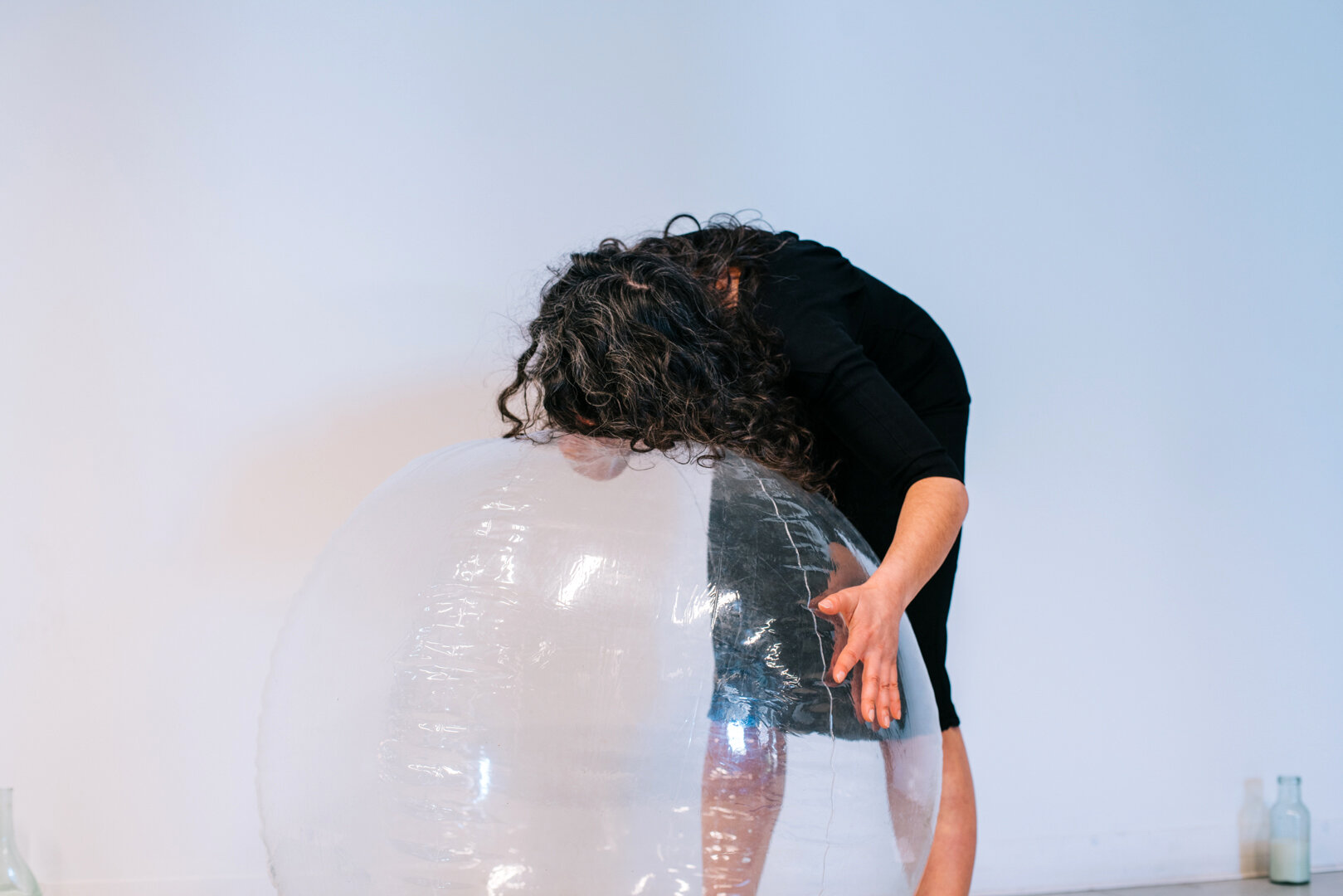
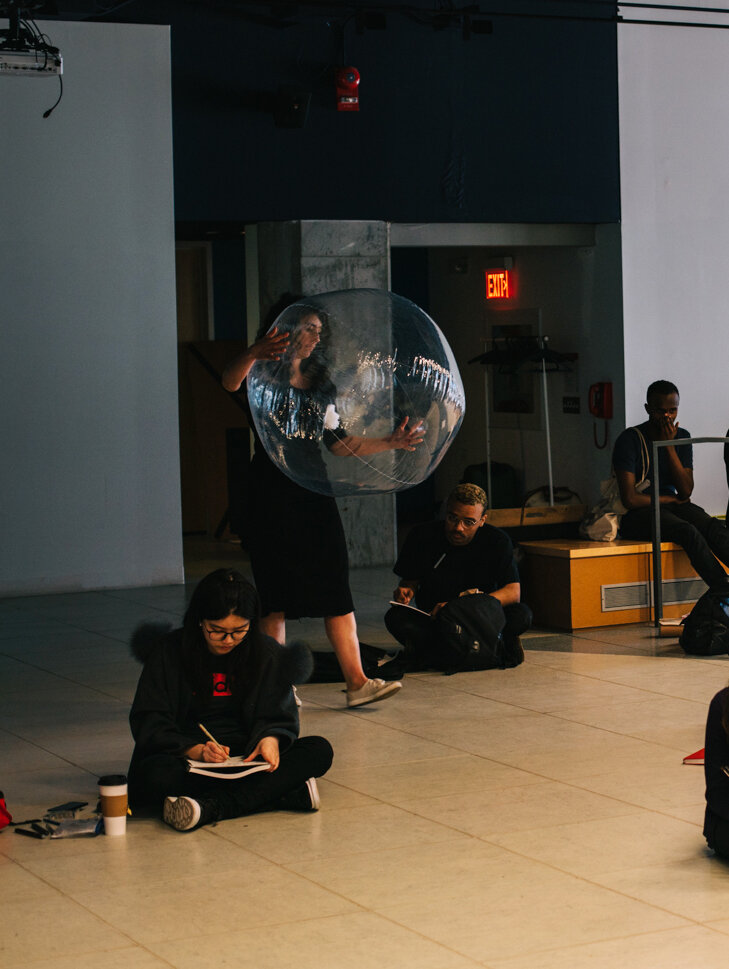
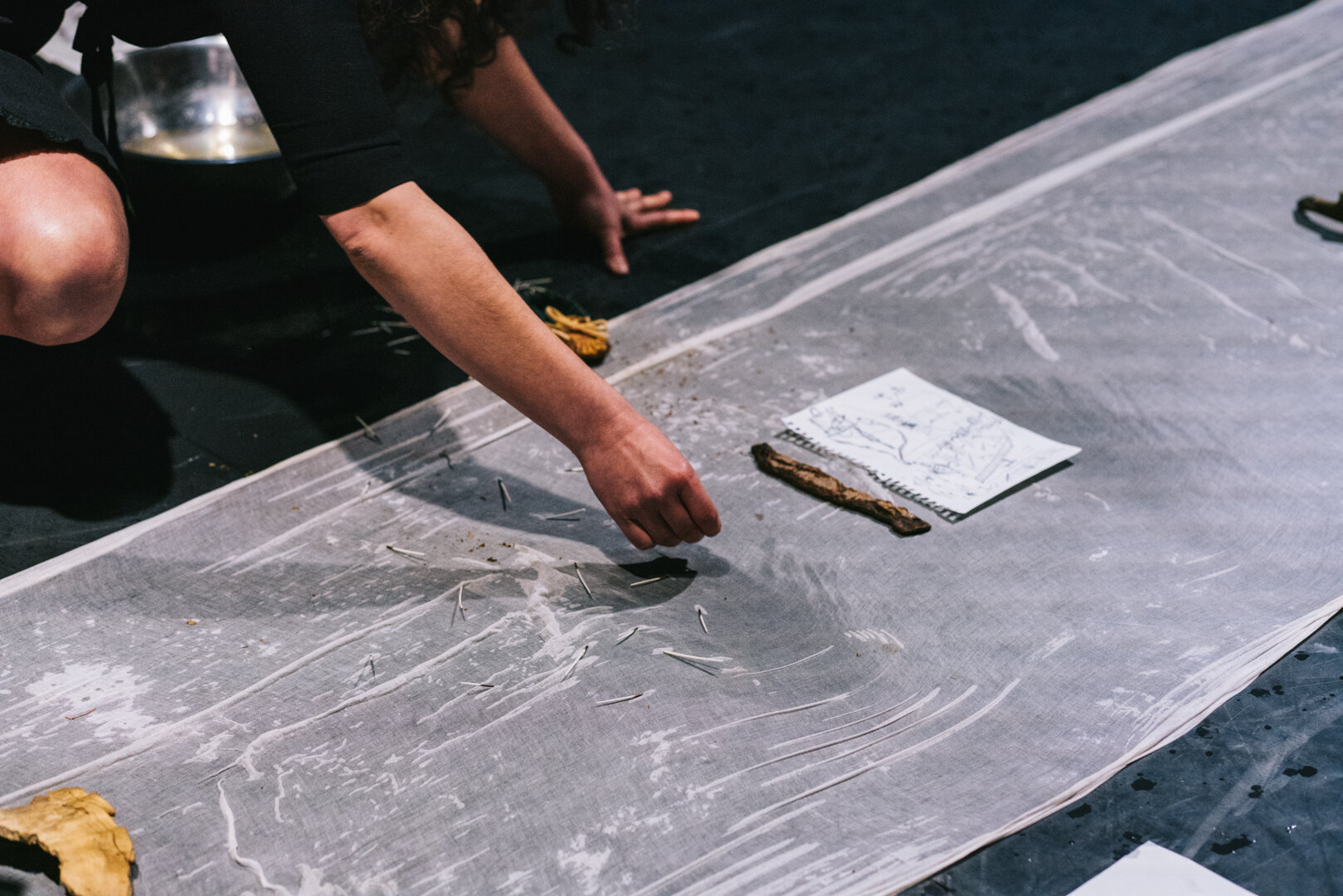
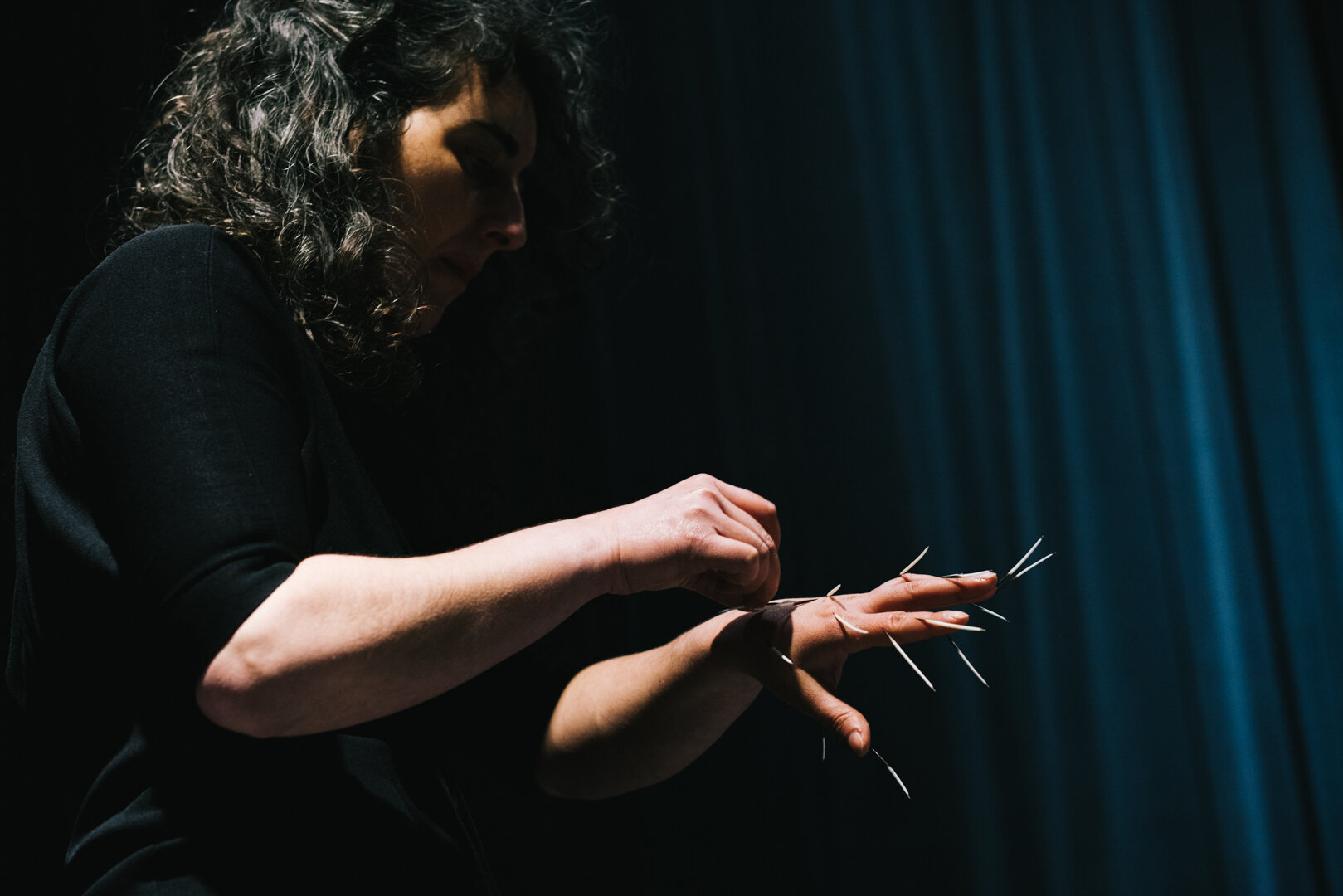
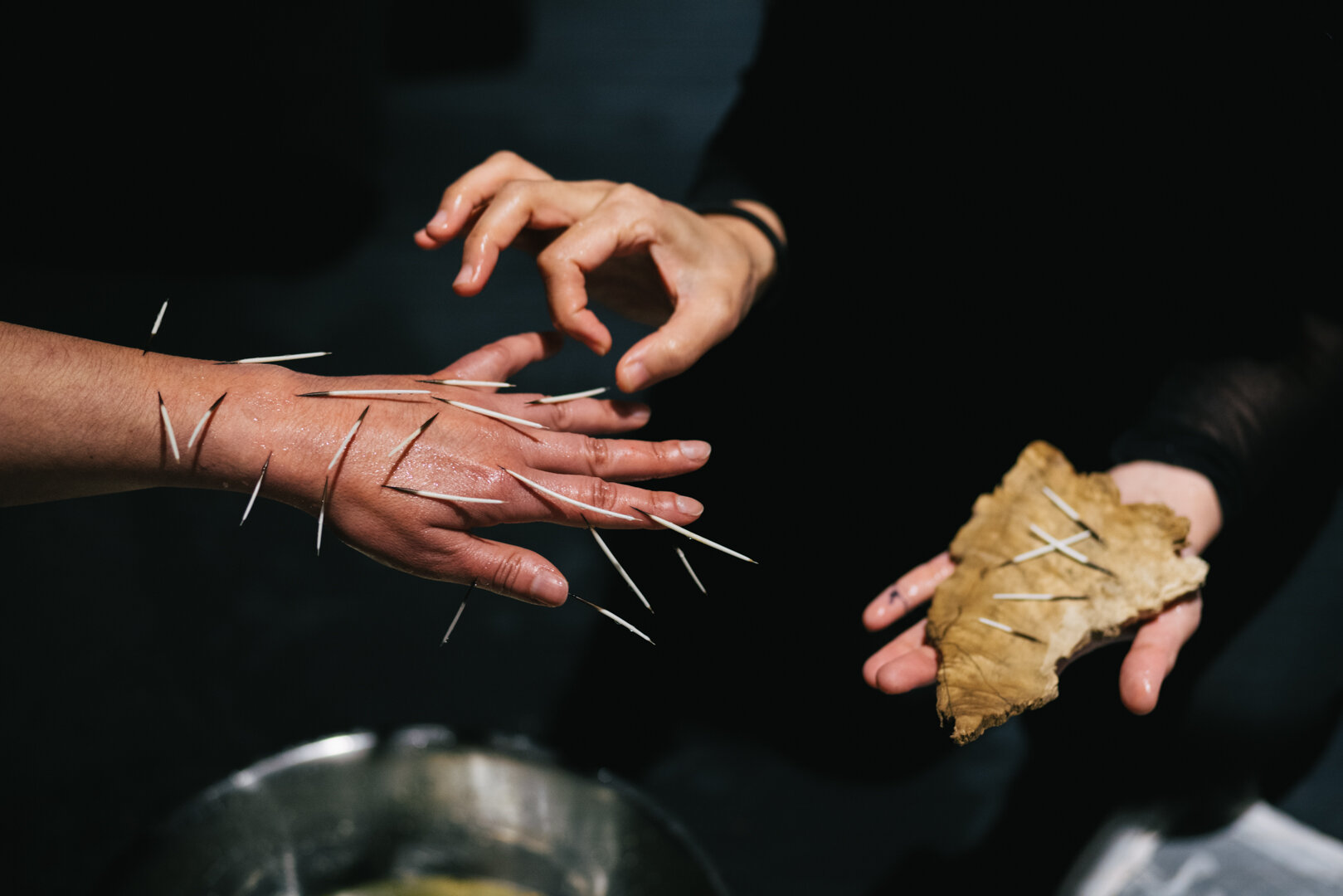
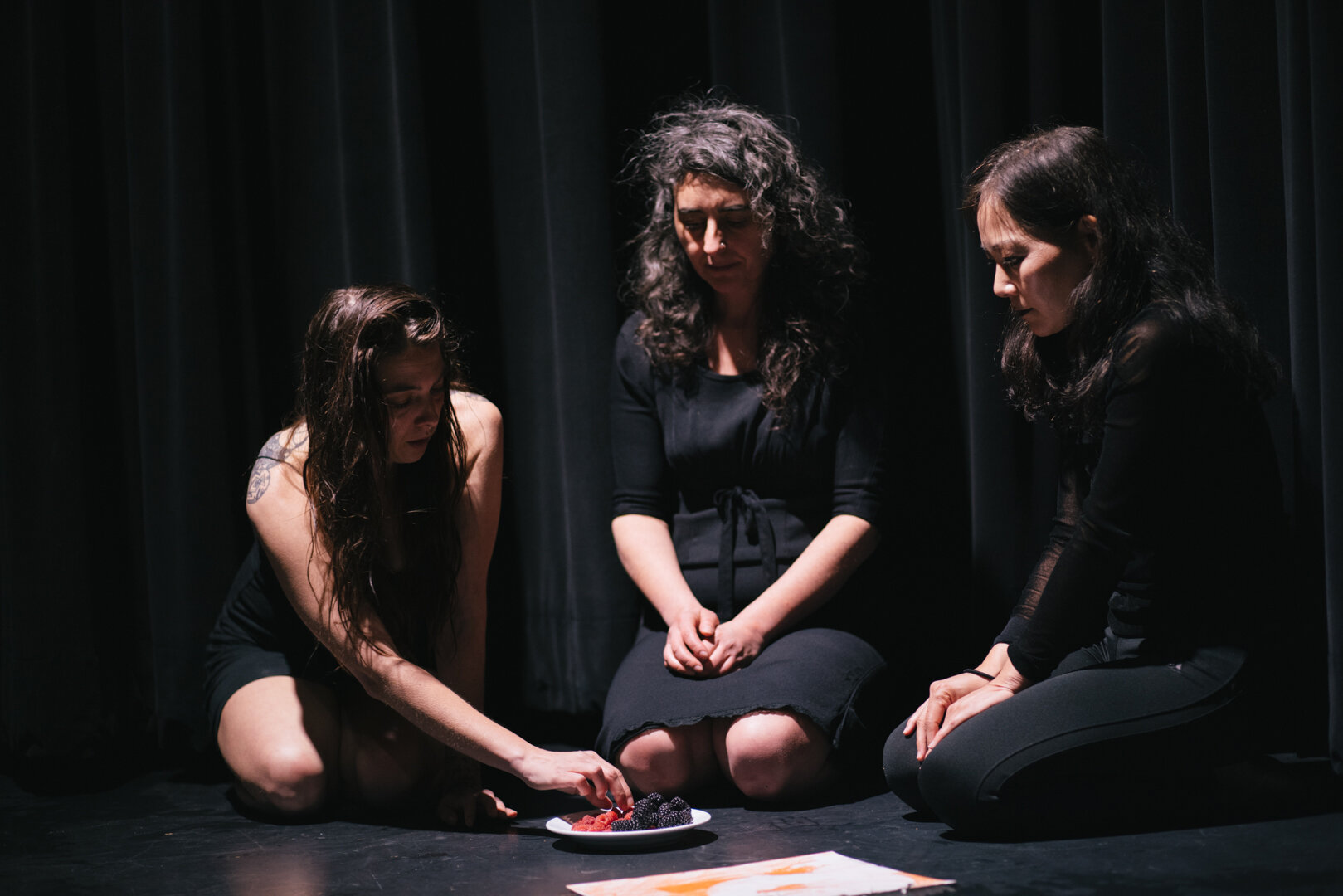
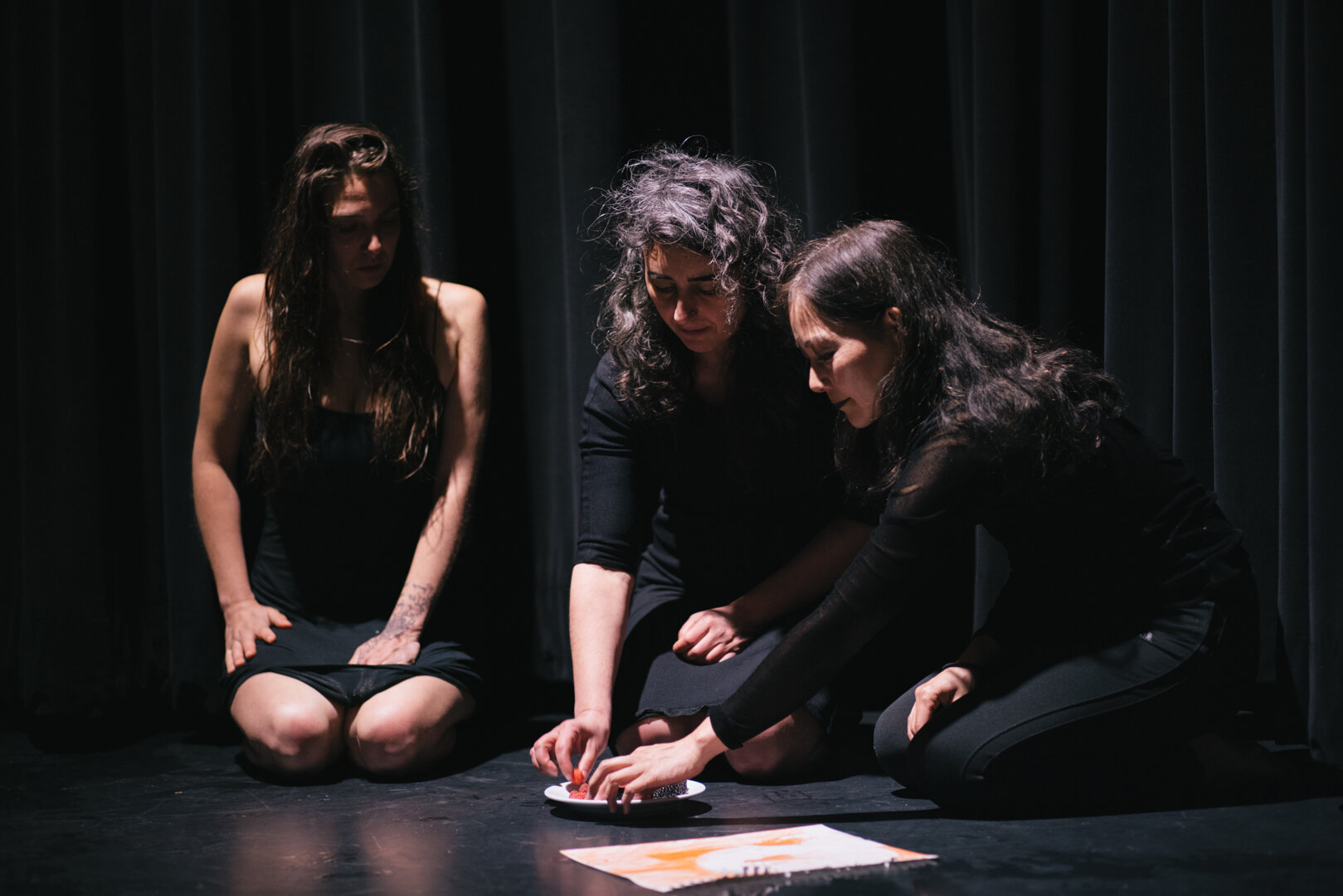
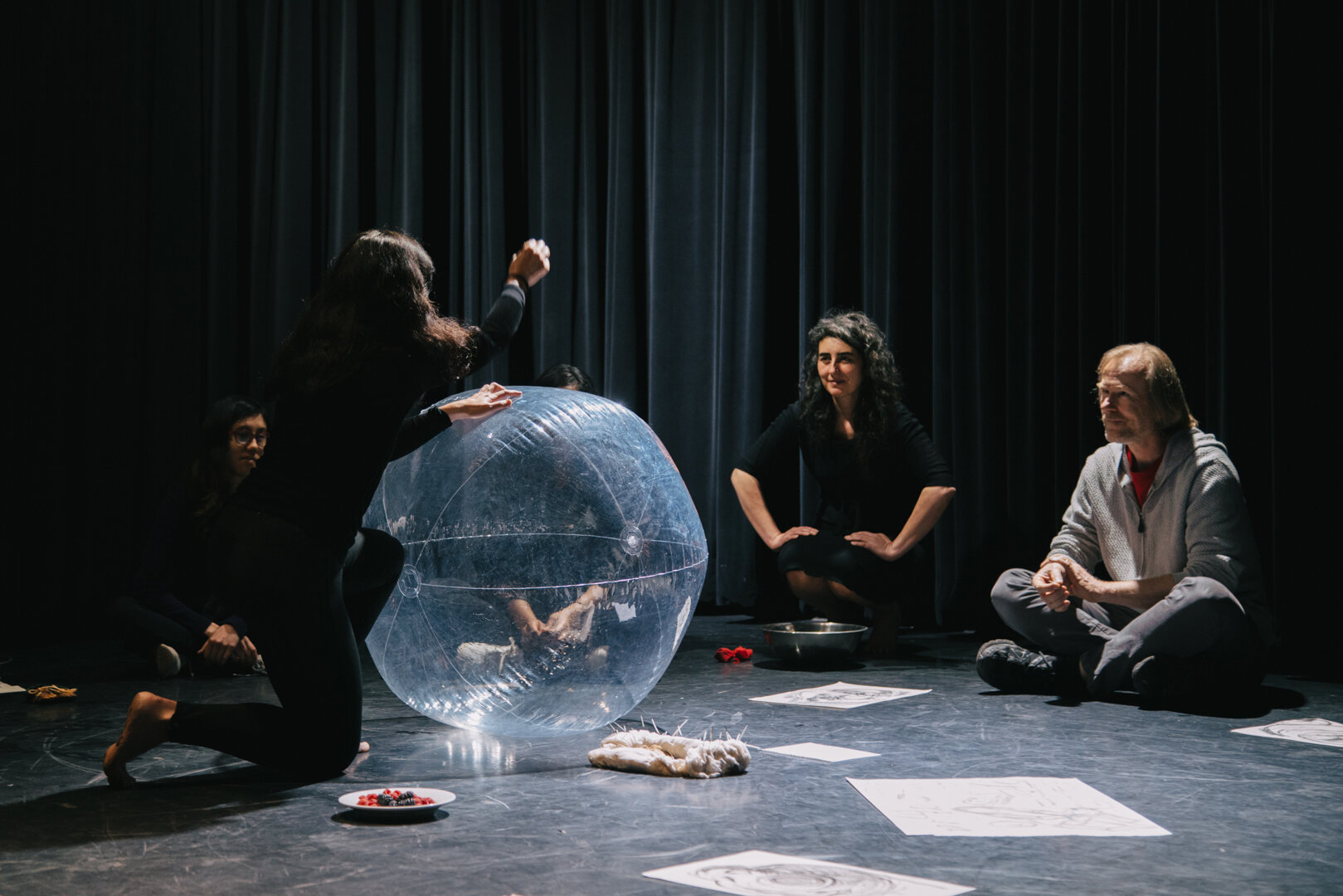
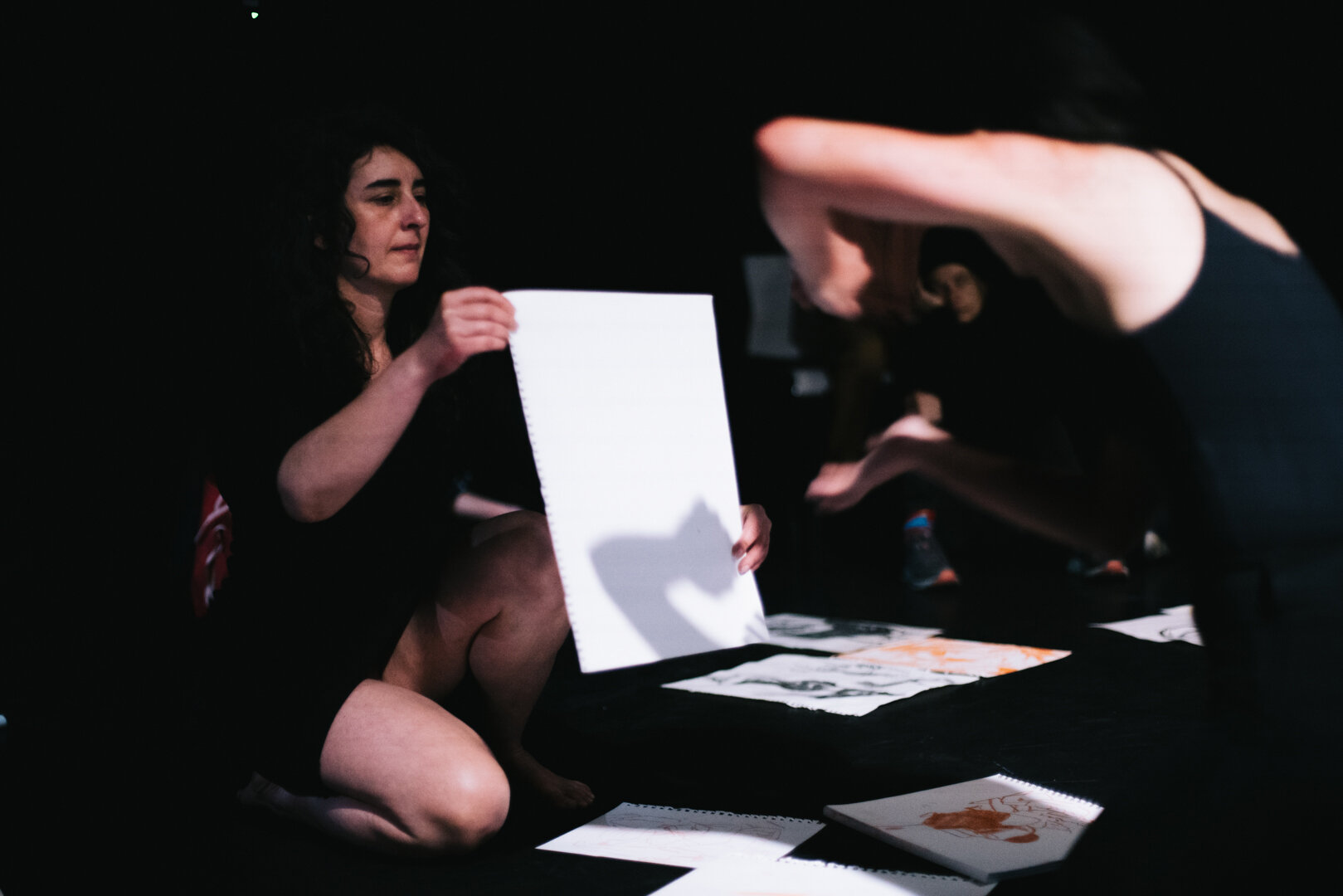
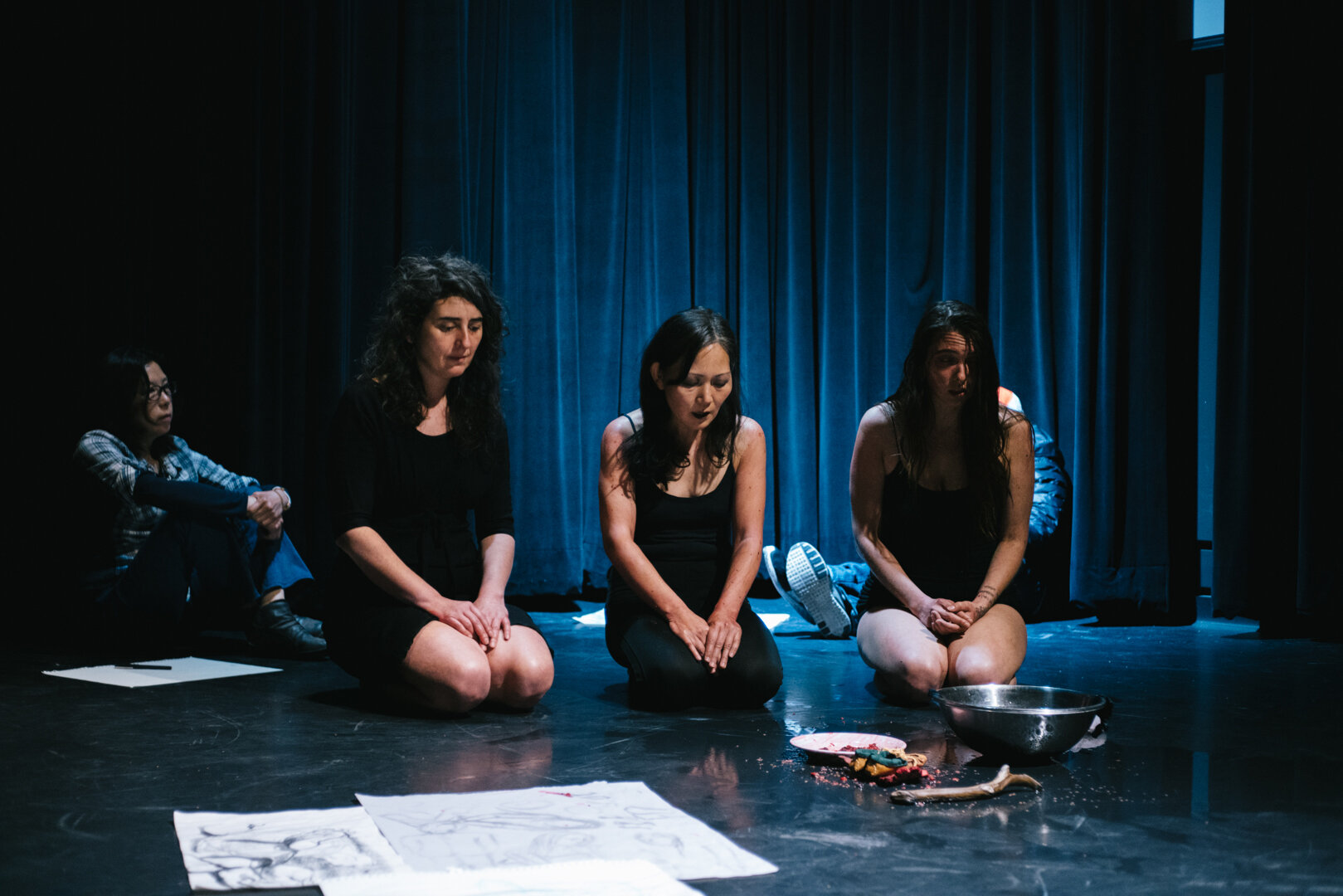
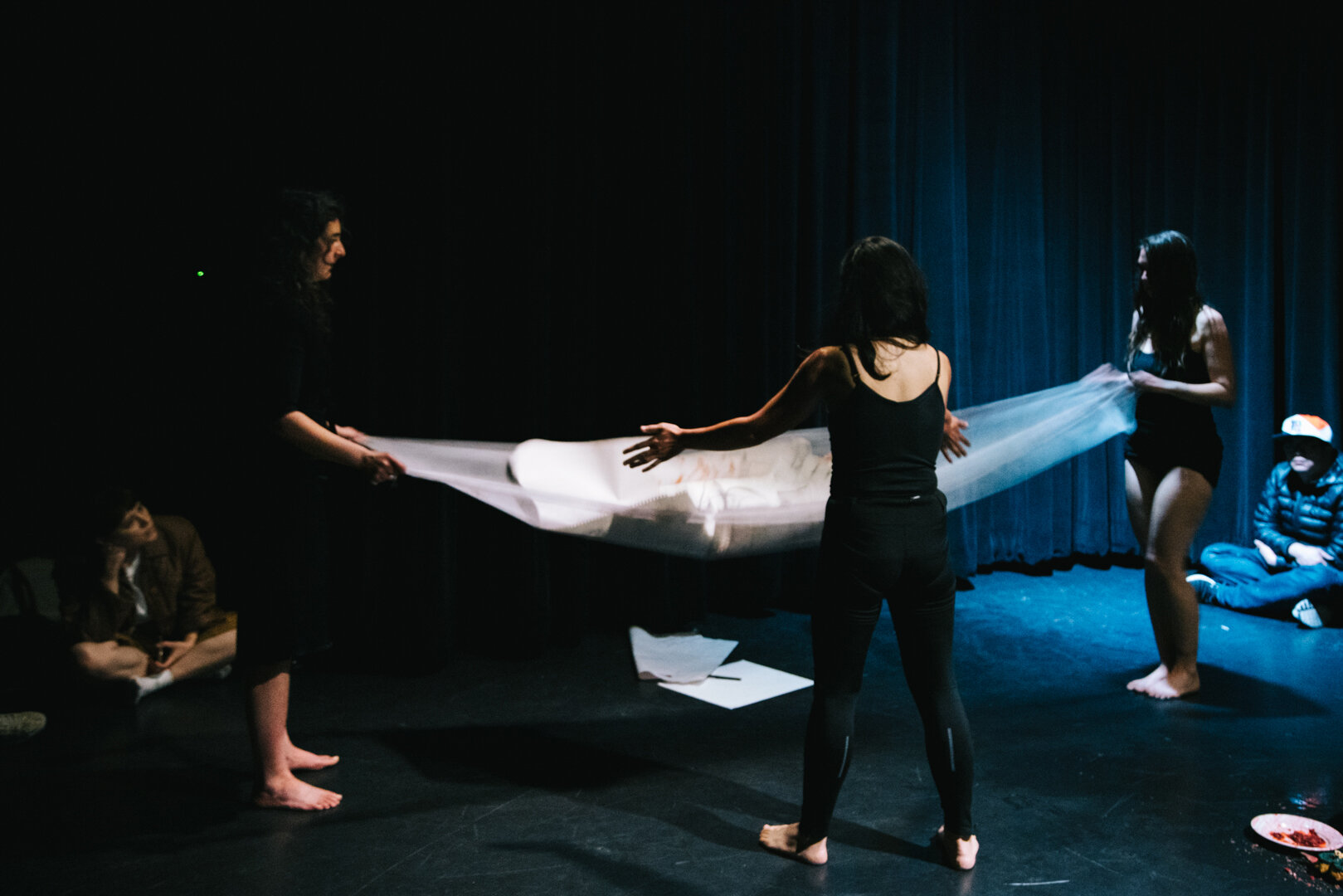
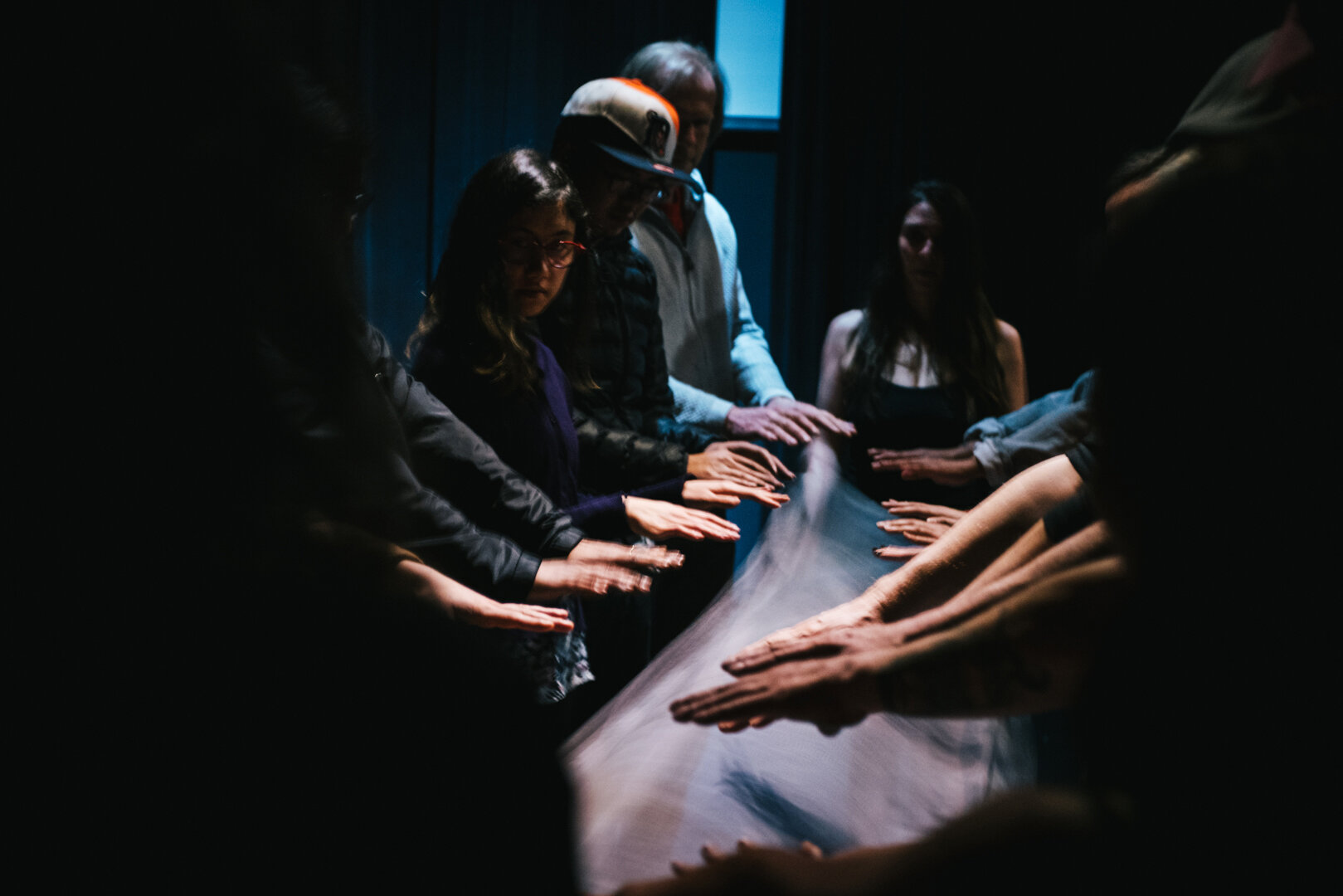
Your Custom Text Here
Durational group performance by
Simlâ Civelek, Ayumi Goto, Soleil Launière
2019, OCAD University, Toronto
Curated by Ashok Mathur
Sponsored by OCADU graduate studies and the Social Sciences and Humanities Research Council
Photography by Yuula Benivolski
Durational Performance Notes, Written by Keiko Hart
To look is a physical act; to bear witness to a performance is to be active in it. A witness to a performance is a participant; performer and witness act together. But can they feel together? The personal narratives we share through the language of feeling invites empathy. Practicing empathy suggests we can feel the emotions derived from the lived experiences of another through understanding. How do we reach this understanding—how do we feel together?
When I enter the space at 49 McCaul, I immediately feel as though I’m witnessing something intimate. Glass bottles with long narrow necks and spherical bases lean against the wall for Simlâ Civelek to pluck and gently pour milk into. Their bulbous basins fill with opaque white. Civelek doesn’t return them to the wall, but moves to balance them upright on the tiled floor without the support to stand, confronting their circular nature. Each tips and spills its contents almost instantly save for a few ephemeral moments that still time. It is in these focused instances that I feel most tense, while the fall is a flooding release.
Adjacent to Civelek is the Blackbox, a windowless space where I find an arrangement of objects that reads more ceremonially. A pair of baby shoes made of animal hide are placed between a triangular arrangement of porcupine quills. A cheesecloth is stretched out like a placemat for three pieces of ossified driftwood. Soleil Launière tells me they are the bones of the ocean. They are bordered by three metallic bowls filled with water that Launière shifts between: dipping her hands; swinging her arms to leave trails of fluid along the ground; dripping liquid along the edges of the cloth; bringing it to her head and letting it soak into her hair, face, body.
Dried tobacco is sprinkled in barely noticeable traces throughout 49 McCaul. It hints to hidden histories that came before institutional structures. Ayumi Goto begins by scatterring the cured leaves along the building perimeter, then moves into the entrances and hallways. She motions for me to open my hands and places a pinch of it into my palms. More witnesses come and go: arts students who draw interpretive portraits of the scene laid out to them by the performers, visual records of what has taken place. Eventually the three performers and audience migrate to the Blackbox, coming together in close quarters as Goto mirrors the movements of Civelek and Launière, (re)inhabiting and (re)experiencing, motioning as if to handle invisible energies—unifying mortal and spiritual.
Durational group performance by
Simlâ Civelek, Ayumi Goto, Soleil Launière
2019, OCAD University, Toronto
Curated by Ashok Mathur
Sponsored by OCADU graduate studies and the Social Sciences and Humanities Research Council
Photography by Yuula Benivolski
Durational Performance Notes, Written by Keiko Hart
To look is a physical act; to bear witness to a performance is to be active in it. A witness to a performance is a participant; performer and witness act together. But can they feel together? The personal narratives we share through the language of feeling invites empathy. Practicing empathy suggests we can feel the emotions derived from the lived experiences of another through understanding. How do we reach this understanding—how do we feel together?
When I enter the space at 49 McCaul, I immediately feel as though I’m witnessing something intimate. Glass bottles with long narrow necks and spherical bases lean against the wall for Simlâ Civelek to pluck and gently pour milk into. Their bulbous basins fill with opaque white. Civelek doesn’t return them to the wall, but moves to balance them upright on the tiled floor without the support to stand, confronting their circular nature. Each tips and spills its contents almost instantly save for a few ephemeral moments that still time. It is in these focused instances that I feel most tense, while the fall is a flooding release.
Adjacent to Civelek is the Blackbox, a windowless space where I find an arrangement of objects that reads more ceremonially. A pair of baby shoes made of animal hide are placed between a triangular arrangement of porcupine quills. A cheesecloth is stretched out like a placemat for three pieces of ossified driftwood. Soleil Launière tells me they are the bones of the ocean. They are bordered by three metallic bowls filled with water that Launière shifts between: dipping her hands; swinging her arms to leave trails of fluid along the ground; dripping liquid along the edges of the cloth; bringing it to her head and letting it soak into her hair, face, body.
Dried tobacco is sprinkled in barely noticeable traces throughout 49 McCaul. It hints to hidden histories that came before institutional structures. Ayumi Goto begins by scatterring the cured leaves along the building perimeter, then moves into the entrances and hallways. She motions for me to open my hands and places a pinch of it into my palms. More witnesses come and go: arts students who draw interpretive portraits of the scene laid out to them by the performers, visual records of what has taken place. Eventually the three performers and audience migrate to the Blackbox, coming together in close quarters as Goto mirrors the movements of Civelek and Launière, (re)inhabiting and (re)experiencing, motioning as if to handle invisible energies—unifying mortal and spiritual.